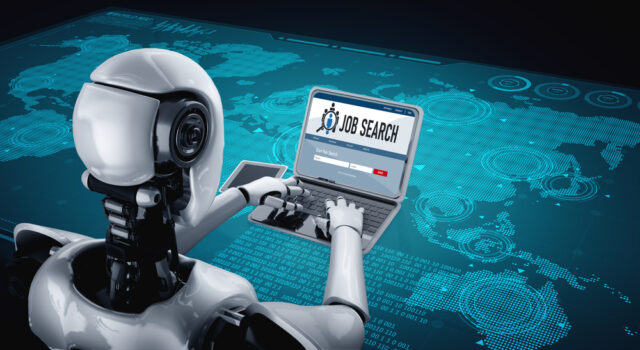The in-demand AI job roles and what they mean for business [Q&A]

As artificial intelligence finds its way into more and more areas there are concerns around accuracy, security, jobs and more.
Addressing these means organizations will need to fill some new roles. To find out what they are and what impact they will have we spoke to Aimei Wei, chief technical officer and co-founder of Stellar Cyber, to get her views on the AI hiring market.
BN: What are the main concerns around the increased use of AI?
AW: In 2025, artificial intelligence will become the most widely used tool in cybersecurity, both by malicious actors enhancing cyber attacks like hyperrealistic phishing campaigns, and by technology companies rolling out AI features to help customers automate their defensive capabilities. This presents both a need and an opportunity for security professionals to learn how to use AI to combat the onslaught of new attacks coming down the pike, and in turn, strengthen their AI-centric technical skills to make them more appealing in the job market.
BN: Which new roles will be needed for businesses to address these?
AW: This year, the cybersecurity job market will witness a huge hiring spike in three highly in-demand roles critical to strengthening security operations in an AI-first world: Senior Security Analyst, Junior Security Operations/SOC Analyst and a new role I expect to see take shape in 2025 called the AI Researcher.
Senior Security Analysts will act as critical human anchors in this process for many organizations. They are trusted voices in the room, collaborating with both business and technology leaders to provide human intuition and decision-making capabilities. These analysts will be trusted to make the final call on addressing potential threats initially identified by AI-powered products or services.
Junior analysts, particularly those in security operations, are a highly valuable tech hire in an AI-dominated market because of their ability to quickly learn and adapt using new AI technologies. By working with and mastering AI-assisted tools that explain and add context to its findings, junior analysts can help senior leaders make better informed decisions while quickly upleveling their AI skills.
A new role, the AI researcher, will become one of the hottest cybersecurity hires in 2025 because of their ability to study the use of AI by malicious actors in hacking campaigns, analyze AI effectiveness within the tech stack and develop internal policies on AI usage. This multipurpose role will serve as a critical support to senior and junior analysts, the security team at large, and even produce board-ready insights about how best to engage with AI to help protect the business while remaining highly competitive in the marketplace.
BN: Why is it so vital that humans still make the final calls?
AW: Humans have the ability to collaborate deeply with various stakeholders, understand critical nuance, and can rely on years of expertise and intuition to make tough judgement calls. From our research, it is the human plus AI combination that remains the most powerful, with human beings as the key anchor to that dynamic.
BN: Many people worry about AI taking jobs, could these developments actually mean we need more?
AW: AI is here to stay, that's a given. In the technology job market, specifically cybersecurity, it is not a matter of losing a job opportunity to AI itself but rather losing a job opportunity because of a lack of understanding on AI, including how it works, how to operate it within the context of a security program, how and where to invest in AI, and so on. I believe we will see more AI-centric roles pop up in 2025, but before that, it's important for technical practitioners to find opportunities to close those AI skill gaps today and with the amount of open-source tools, active AI communities and freely available training content, it's easier to do so than ever before. In other words, it's never too late to learn AI!
BN: Will smaller organizations struggle unless they outsource or automate some of these tasks?
AW: We see many organizations struggling to keep up with the sheer volume of attacks in today's threat landscape, but in particular smaller, mid-market and medium-sized enterprises struggle the most. These organizations don't have the same technology budgets, resources or personnel compared to their enterprise peers but still face a whopping number of attacks that they struggle to keep up with, with 60 percent of mid-market companies citing cyber attacks as their number one business concern in 2024 (Crowdstrike, 2025).
We also understand that this journey for lean security teams is tough to go on alone, which is why we've dedicated our entire mission at Stellar Cyber to leveraging AI and automation to help mid-market companies achieve the scale needed to protect their organizations.
Image credit: BiancoBlue/depositphotos.com
